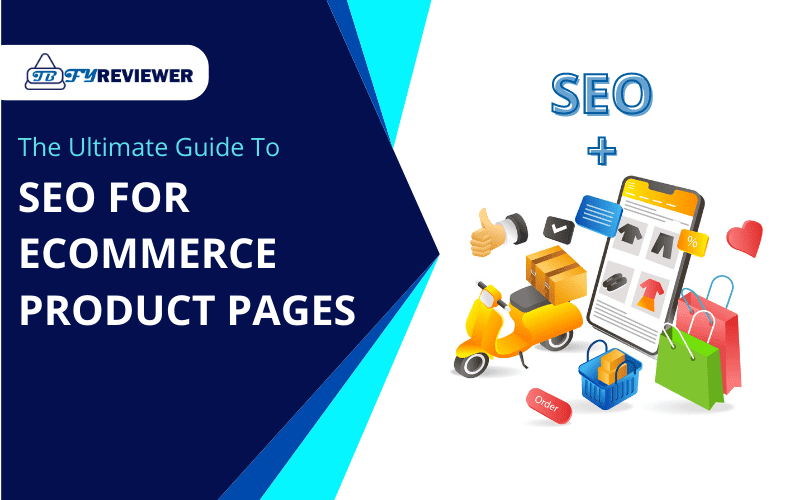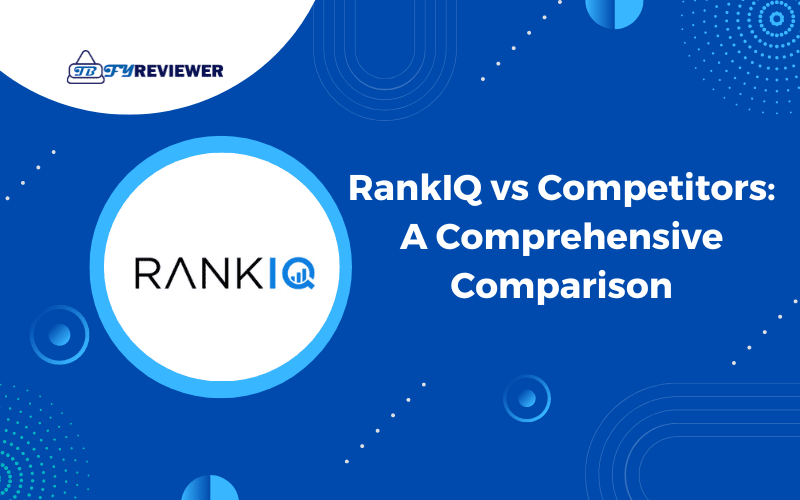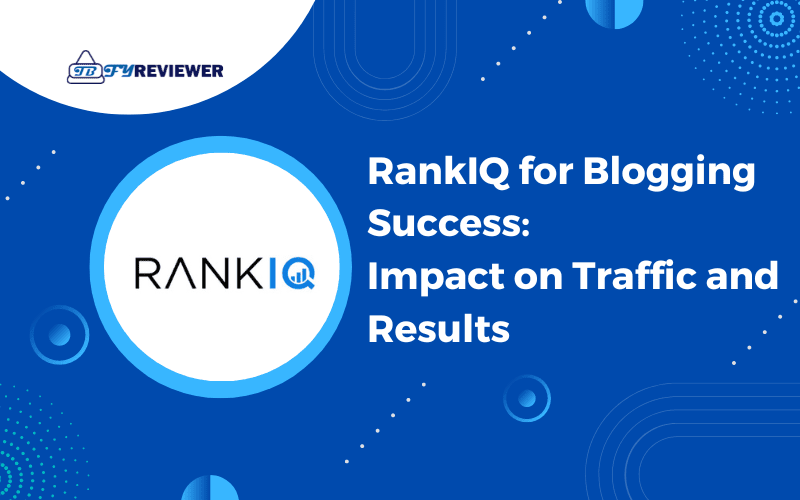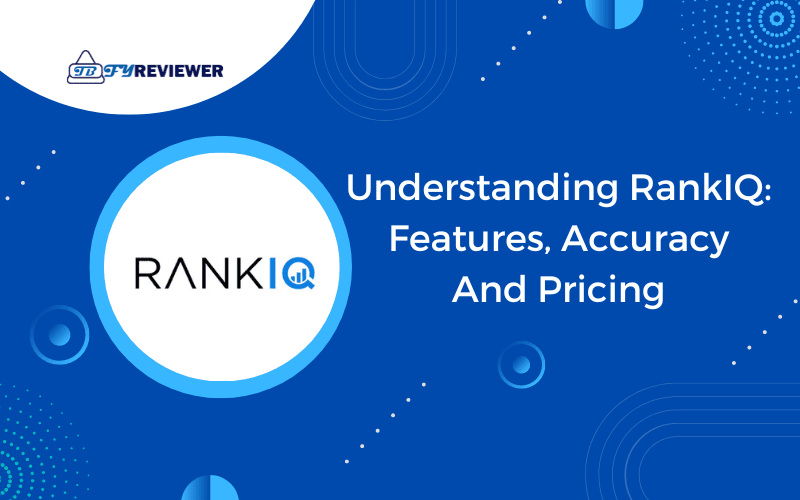Join TbfyReviewer’s newsletter to receive every new article.
The Ultimate Guide To SEO For Ecommerce Product Pages
Hossam jamjama
- June 7, 2023

Are you struggling to get your ecommerce product pages to rank higher in search engine results? Look no further than SEO for ecommerce product pages, which is instrumental in boosting online visibility and accelerating revenue growth.
In this Ultimate Guide to SEO for Ecommerce Product Pages, we’ll delve into why optimizing your pages is crucial in today’s competitive online market.
With millions of websites battling for attention and traffic, professional SEO is key to ensuring your products and pages show up at the top of search results.
From mastering keyword research to analyzing performance metrics – this guide will equip you with all the necessary knowledge and tactics for maximizing your results.
Spend time optimizing your ecommerce product pages now and watch your revenue soar!
Definition of SEO for Ecommerce Product Pages
Search engine optimization (SEO) is a set of techniques used to improve the visibility and ranking of your website or specific web pages on search engines like Google, Bing, Yahoo! etc.
SEO helps you reach more potential customers by making your site more visible via keywords, phrases, or related concepts.
SEO for ecommerce product pages refers to the principles and strategies used to optimize individual product pages on an ecommerce website for ranking higher in search engine results.
When it comes to ecommerce websites, in particular, SEO is critical for success. This is because if consumers cannot find your products when they search online or cannot easily navigate through your site, then they are unlikely to purchase from you.
By optimizing your ecommerce product pages, you increase their visibility to shoppers searching for relevant keywords. This increases the likelihood of clicks leading to more traffic and sales on your site.
If you are just starting in SEO and want to master it, here is our Ultimate SEO Tutorial for Beginners.
Importance of SEO for ecommerce product pages
Ecommerce businesses rely heavily on their online presence to make sales. With so many businesses out there offering similar products and services, standing out among the competition requires a dedicated approach.
SEO helps businesses increase their online visibility, attracting more potential customers to their web pages organically and for free.
By ranking higher on search engines like Google, ecommerce businesses can increase the traffic to their online store. This can ultimately lead to increased sales and revenue.
In addition to this, ecommerce businesses with effective SEO strategies can benefit from increased brand awareness and authority.
A higher ranking on Google translates into more trust from potential customers who see your business as a credible source of information or products.
Keyword Research
One of the first steps in optimizing your ecommerce product pages for SEO involves conducting thorough keyword research.
Effective keyword research builds a foundation for other aspects of on-page optimization. It’s crucial because it helps you understand what customers are searching for when they visit your website.
Here’s how to perform effective keyword research for ecommerce stores:
Understanding Buyer Personas
The first step in keyword research is understanding your target audience.
Buyer personas or target audience insights give information around many aspects of online consumer behavior, including interests, demographics, income levels, search habits, and more.
Gaining a deep understanding of your target audience enables you to create content that resonates with and engages them.
Conducting Keyword Research
Once you have a clear understanding of your buyer persona, you can start researching the relevant keywords.
Tools such as Ahrefs or KeySearch provide keyword ideas based on relevance and search volume.
It’s essential to pick the right keywords and prioritize their use based on search volume, relevance, and competition from other Ecommerce sites.
Use of Long-Tail Keywords
Long-tail keywords are highly specific phrases that contain more than three words.
They tend to receive less traffic but have higher conversion rates because they precisely match customers’ questions or needs.
Long-tail keywords are typically less competitive than other broad keywords for which you might struggle to rank quickly.
Try balancing both broad/general keywords with long-tail keywords for effective results.
On-Page Optimization
Once you have determined the target keywords, it’s time to start optimizing your ecommerce product pages. On-page optimization deals with how you structure content within your webpage.
The following guidelines will help optimize your ecommerce product pages:
Optimizing titles and meta descriptions
Optimizing titles and meta descriptions is an important component of on-page optimization.
A well-crafted title tag and meta description that include your target keyword can help improve click-through rates from search results as users are likely to perceive the page content as relevant to their search query.
Title tags tell users and search engines what a page is about. They specify the content of a web page in two main pieces: the title tag itself and the meta description below it. Ensure Title tags are unique and Summarize accurately what the page is all about; don’t stuff them with unrelated or generic terms.
The meta description provides additional context to users searching for articles versus products on ecommerce stores. Be sure that it contains relevant information in a friendly-to-read narrative style synopsis to describe your offerings perspective customer’s eyes.
Title tags should be descriptive and concise with about 60 characters while meta descriptions should be kept between 120-160 characters long.
Content optimization guidelines
Highly unique, valuable content goes hand-in-hand with an excellent on-page optimization strategy. You can optimize product descriptions in these ways:
Creating high-quality and unique content
Creating unique, high quality content is the most important part for SEO success. Google rewards websites with valuable content that connects with their audience. Great content incorporates unique images and videos besides clear and concise text.
Make sure all your ecommerce product pages have unique and high-quality content that provides value to your customer.
Use the keyword research you’ve performed to understand the specific needs of potential visitors for each page.
Optimizing product descriptions with keywords
Make sure each product description includes target keywords in a natural way without sounding spammy or stuffed. This enhances on-page optimization by establishing strong topical relevance.
The keyword must appear naturally within the context of the product description, making sure it flows smoothly. Don’t force it or include it multiple times too many times, which might taint the user experience negatively.
Remember to use these keywords judiciously throughout the body copy as well, ensuring that the overuse of them doesn’t compromise quality.
Using Images to optimize content
Search bots love alt-text associated with images on webpages since it enables them to understand the page topic. This means it’s essential to include relevant images with optimized alt-text when creating ecommerce product pages.
Images are effective in optimizing content because they visually communicate your products’ value, advantages, and features. Utilize them where appropriate, following proper image guidelines like size specification and file fat.
Image optimization guidelines
Make sure that you optimize your images, reducing their size without compromising the visual quality.
This helps improve the website’s load time, which is a ranking factor with search engines like Google.
ALT tag optimization tips
ALT tags are short descriptions that help search engines comprehend what an image represents or explains to people who rely on assistive technology.
Include appropriate keywords in the image file name and use them cursorily in the ALT tag associated with each image.
Alt tags should be descriptive text snippets that accurately describe image content while utilizing relevant keywords for SEO purposes.
Technical SEO for Ecommerce Product Pages
Technical SEO determines how well search engines such as Google can crawl and index your ecommerce website’s content.
The following tips will guide you to effectively engage in technical SEO:
Overview of technical SEO for ecommerce
Technical SEO involves establishing website parameters acceptable to search engines while ensuring its indexability and overall visibility through relevant searches is top-notch.
Elements such as site speed, mobile-friendliness, structured data, and crawlability are fundamental to Technical SEO.
It ensures website quality assurance by optimizing these Elements while decreasing errors or redirects to create a smooth user experience while promoting growth in online visibility proactively.
Site architecture optimization tips
Site architecture refers to how webpages on a website connect to one another through internal linking, navigation menus, site hierarchy, URL structure, and more.
These necessary elements have a significant role in helping search engines find and index web pages.
Understanding site hierarchy and URL structure
A well-planned site architecture featuring optimized URLs can help induce a semantic relationship between different pages.
Use a website hierarchy to organize your site’s structure and show the relationships between pages. Use breadcrumbs to help visitors navigate through the pages.
Include keywords in URLs for improved indexing by search engines. Use short and concise URLs that incorporate descriptive keywords alongside breadcrumbs or hierarchal links indicating where each webpage resides within the overall site framework.
Ensuring proper internal linking and navigation
A website architecture allows ease of movement within its structure.
Proper internal and external linking helps establish positive user experiences while also guiding search bots through your website easily.
Create a proper interlinking structure where each page is linked with other relevant internal pages, and create effective site navigation by organizing content with silos.
Ensure all links work correctly and are properly formatted with appropriate anchor texts comprising the target keyword.
Mobile-friendliness and website speed optimization tips
With over 57 percent of online searches occurring on mobile devices, the responsiveness of websites ranks more critical than ever before.
Consequently, it’s paramount that all ecommerce sites are optimized for mobile responsiveness, speed, and schema markup for both mobile and desktop versions of the website.
Use PageSpeed Insights, GTMEtrix, or Pingdom speed test tools to examine store site performance; if applicable, address identified issues promptly.
Off-page Optimization
Off-page optimization strategies refer to those activities done outside of the website that creates backlinks. Without enough backlinks, even high-quality content won’t compensate fully for missed SEO potential.
Link Building Strategies for Ecommerce Product Pages
One of the best ways to improve off-page optimization is by creating relevant, high quality content that other websites will want to link to naturally.
Link building tactics focus on getting other sites to link back to your Ecommerce store – indicating to Google that your website is reputable and trustworthy.
Here are two popular link building strategies you can utilize:
Guest blogging strategies for ecommerce sites
Guest blogging on external platforms can help build online authority while also providing valuable backlinks to your ecommerce store.
Reach out to blogs that cover similar topics as your ecommerce store or have complementary target audiences.
Social media promotion tips for ecommerce sites
Social media platforms offer a plethora of opportunities to promote your ecommerce store besides increasing brand awareness; it may drive traffic to your products while building links using the right strategy tactics.
Media platforms such as Instagram, Facebook, and Pinterest provide useful opportunities to share products with new shoppers, attract more followers, and build brand loyalty.
Sharing product images, videos, and reviews creates excitement beyond just promoting your product offerings in a visually stimulating manner and creates engagement opportunities with potential customers on social media channels leading to growth.
Analyzing SEO Performance
At this stage in our ultimate guide, we’ll cover ways of monitoring and assessing your ecommerce site’s SEO progress.
Understanding the role of analytics in measuring SEO performance on e-commerce sites
Web analytics tools help track key metrics such as organic traffic, bounce rates, time spent on a page, page views, conversions, and more.
Google Analytics and SEMrush are examples of such trackers widely in use today.
Tracking key metrics from Web analytics tool
Keeping track of quantitative metrics helps evaluate the effectiveness of an ecommerce site’s SEO strategy used.
Useful KPIs include organic traffic volume, keyword rankings for specific target phrases or landing pages, conversion rates, repeat visitor numbers, etc.
SEO Tools to Use
To help you attain your ecommerce site SEO objectives, you can leverage an array of advanced SEO tools. These tools aid you in uncovering a variety of search engine marketing approaches while exploring your competitors’ organic search results:
Surfer SEO
Surfer SEO is a cloud-based On-Page optimization tool able to audit sites to reveal which signals are significant for ranking by analyzing the most important on-page ranking factors in order to enhance the competitiveness and discoverability of the website.
KeySearch
KeySearch is multipurpose keyword research software that enables users to discover more straightforwardly noncompetitive, long-tail keywords that buyers frequently use when searching on Google.
Ahrefs
Ahrefs is an all-in-one search engine optimization toolset illuminating linking data from millions of web pages and conducting deep-site audits, trend analyses, competitor analysis, and many more.
Semrush
Semrush is a comprehensive competitor intelligence tool utilized for understanding ranking data and conducting thorough research into competitors’ backlinks, providing insights into Google AdWords spending strategy and identifying related keywords useful in creating successful ad campaigns.
Summary:
Through combining research provided by multiple SEO tools with your website’s analytics, integrating online store customizations and relevant user feedback can help improve business requirements such as search visibility, traffic conversions, and retaining customers.
Conclusion
In conclusion, mastering SEO for ecommerce product pages is crucial in today’s competitive online landscape. If you want to drive sales growth and increase revenue, implementing effective SEO strategies is a must.
By following the guidelines outlined in this ultimate guide, your ecommerce website can stand out from competitors, reach potential consumers, and improve online visibility.
Keeping up with the latest trends and tracking metrics regularly will ensure that your SEO efforts remain effective over time.
Remember to optimize content silos with targeted keywords that bring value, and you’ll watch your traffic grow while your revenue follows proportionately in line with Google’s ranking algorithm.
- Last Update OnJune 7, 2023
- ByHossam jamjama

Hossam Jamjama
Hey, it’s Hossam. I am a full time digital marketer & an online business owner. I write guides and in-depth reviews of the best SaaS products available. To help businesses make informed decisions about picking the right one for them.
Disclosure: TbfyReviewer is a participant in various affiliate programs, which means we may earn a commission when you buy something through links on our site at no cost to you if you decide to purchase a paid plan. You can read our affiliate disclosure.




